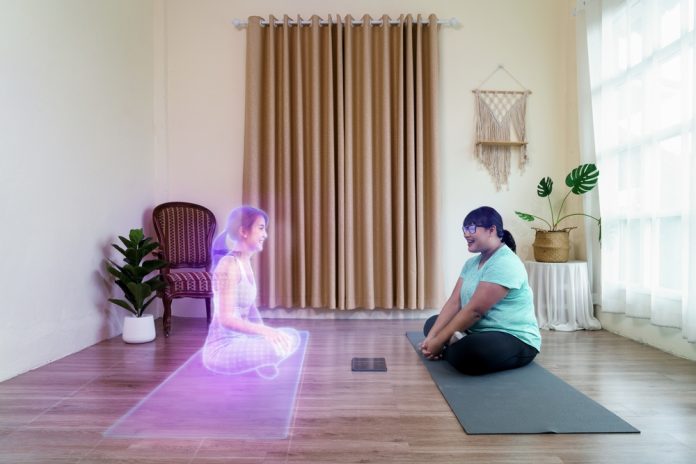
When your industry suffers from a shortage of skilled workers, recruiting new personnel is difficult. The experienced talent you want just isn’t out there. Your best alternative is to spend less time looking for skilled workers and, instead, give your current employees the skills they need to move up and take on new tasks.
The healthcare industry increasingly has been adopting this approach. Healthcare has seen incredible growth in recent years, which has created a hiring gap. The Bureau of Labor Statistics predicts there will be 1.8 million job openings per year through 2032. At the same time, 6.5 million healthcare workers are expected to leave their jobs by 2026. Some professionals are aging out of the healthcare industry, while others are leaving due to burnout. An increase in chronic conditions such as heart disease, diabetes, cancer, and Alzheimer’s disease is putting additional strain on healthcare providers, which exacerbates the staffing shortage. Healthcare providers also are asking current staff to assume more responsibilities, even though there isn’t the time or resources to provide adequate training.
As a result, more healthcare institutions are looking to upskill or reskill existing personnel to step into new roles. They are adopting new training techniques for existing staff, which include online courses that make it easier for workers to acquire new skills and certifications.
Immersive Virtual Learning Experiences
Virtual education courses have come a long way. Advancements in technology are transforming learning platforms to provide a more immersive, interactive experience. Fueled by artificial intelligence (AI), augmented and virtual reality (AR and VR), and 3D technology, these programs are redefining education, providing certifications for current employees and a rapid pathway for those pursuing a career in the medical field.
Picture this: Holographic mentors guide learners through surgeries and anatomy like seasoned pros. Mental health students converse with avatars, each portraying real-life scenarios of individuals facing diverse mental health challenges. With the freedom to ask questions and interact, students dive deep into therapy sessions, guided by AI’s watchful eye for invaluable feedback. In virtual doctors’ offices, students navigate medical assessments alongside avatars, unraveling the mysteries of various ailments. And applying gamification as part of education, students enter a simulated hospital room or treatment center and perform virtual procedures.
Artificial intelligence is playing a larger role in diagnostic role-play by providing automated responses and helping instructors assess avatar sessions and provide feedback. This innovative approach not only enhances the realism of the training but also ensures a dynamic learning experience tailored to a learner’s needs and progress. It transforms traditional methods by substituting controlled simulations with virtual avatars to create an immersive learning experience like never before.
Upskilling, Reskilling, and Retention Rates
Virtual education opportunities allow healthcare workers to become better at their jobs. For example, workers can be trained in practical skills such as regulatory practices, chart requirements, computer systems and databases, monitoring vital signs and analyzing patient data.
The growing acceptance of an online education is helping healthcare providers address the staffing shortage. As current staff members are given additional responsibilities to make up for staffing shortfalls, they also have a path for further training and certification.
Research shows that 68 percent of employees prefer learning and training on the job. Video lessons and self-training modules make it easy to take courses online during non-working hours. Allowing healthcare workers to advance increases employee retention, confidence, and productivity while bringing new skills to the organization. Upskilling and reskilling also make healthcare employees more efficient. A study by MIT shows that a year-long soft skills training program yielded a 250 percent return on investment in eight months.
Training for medical certifications is an easy way for healthcare workers to advance their careers while creating more value for employers. Various clinical and technical certifications lend themselves to virtual learning:
- Clinical certification: Earning a certified clinical medical assistant (CCMA) certification is ideal for entry-level healthcare workers looking to advance. It’s great for individuals working in a front-office hospital or clinical setting who want to move into a hands-on, caregiving role.
- Professional coding: Certification as a professional coder is attractive because the job is in high demand. There is a growing need for specialists who can assist with coding for medical records and billing.
- Healthcare IT: Technology has become an essential part of healthcare, and there is a chronic shortage of computer specialists. Certification in healthcare-related IT will prove invaluable in a clinical setting.
These are just some of the types of medical certifications available to healthcare workers. Virtual education also offers rapid learner programs that allow students to be certified as job-ready in only three to six months.
While upskilling and reskilling healthcare workers won’t solve the staffing shortage, it can go a long way toward alleviating the strain on overworked hospitals and clinics. Technology advancements such as videoconferencing, AR, and VR have made virtual education more interactive, engaging, and attractive for specialized fields. Technology also enables rapid training of workers in critical areas and creates new opportunities for advancement, higher pay, and greater job security.




